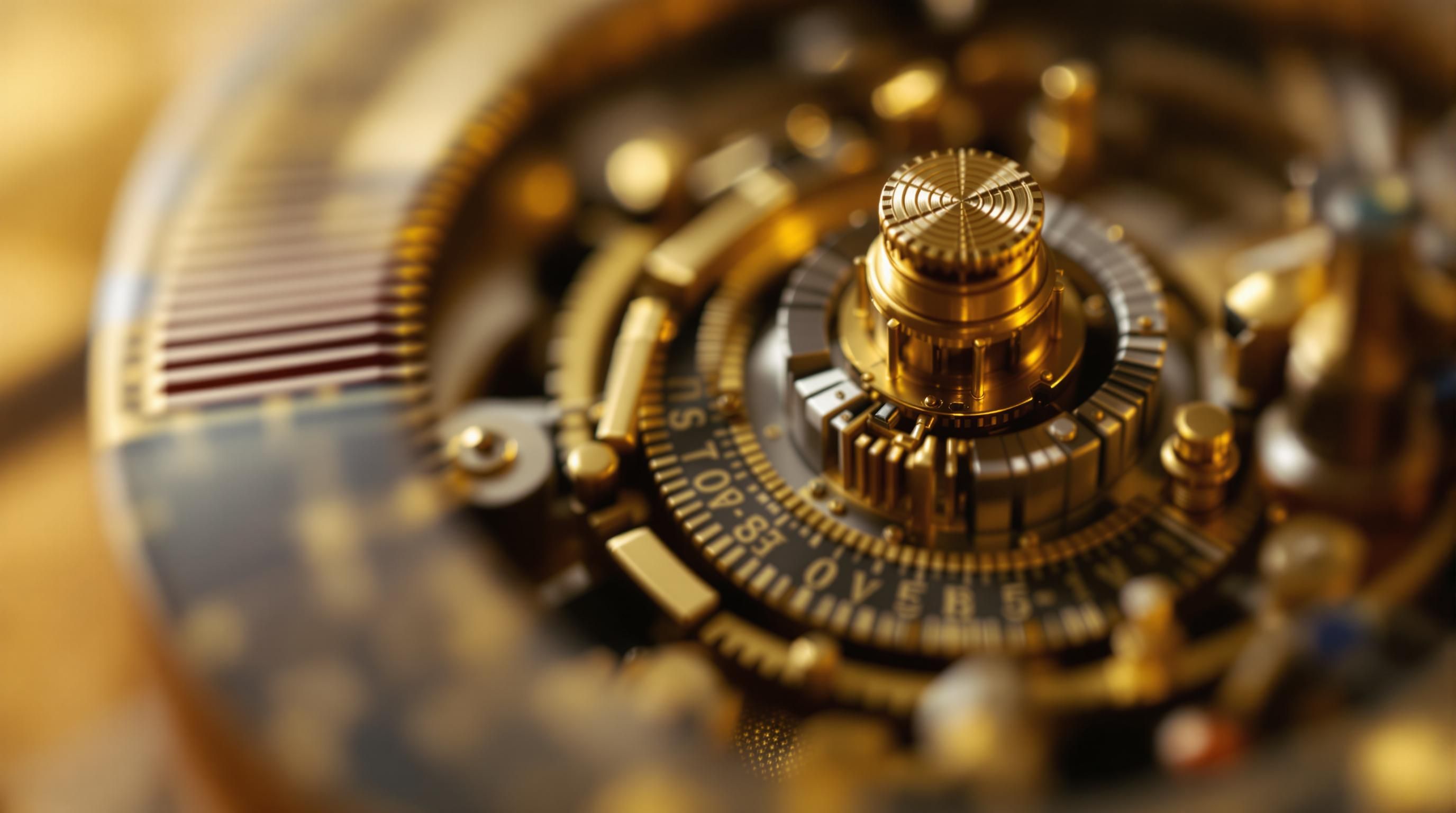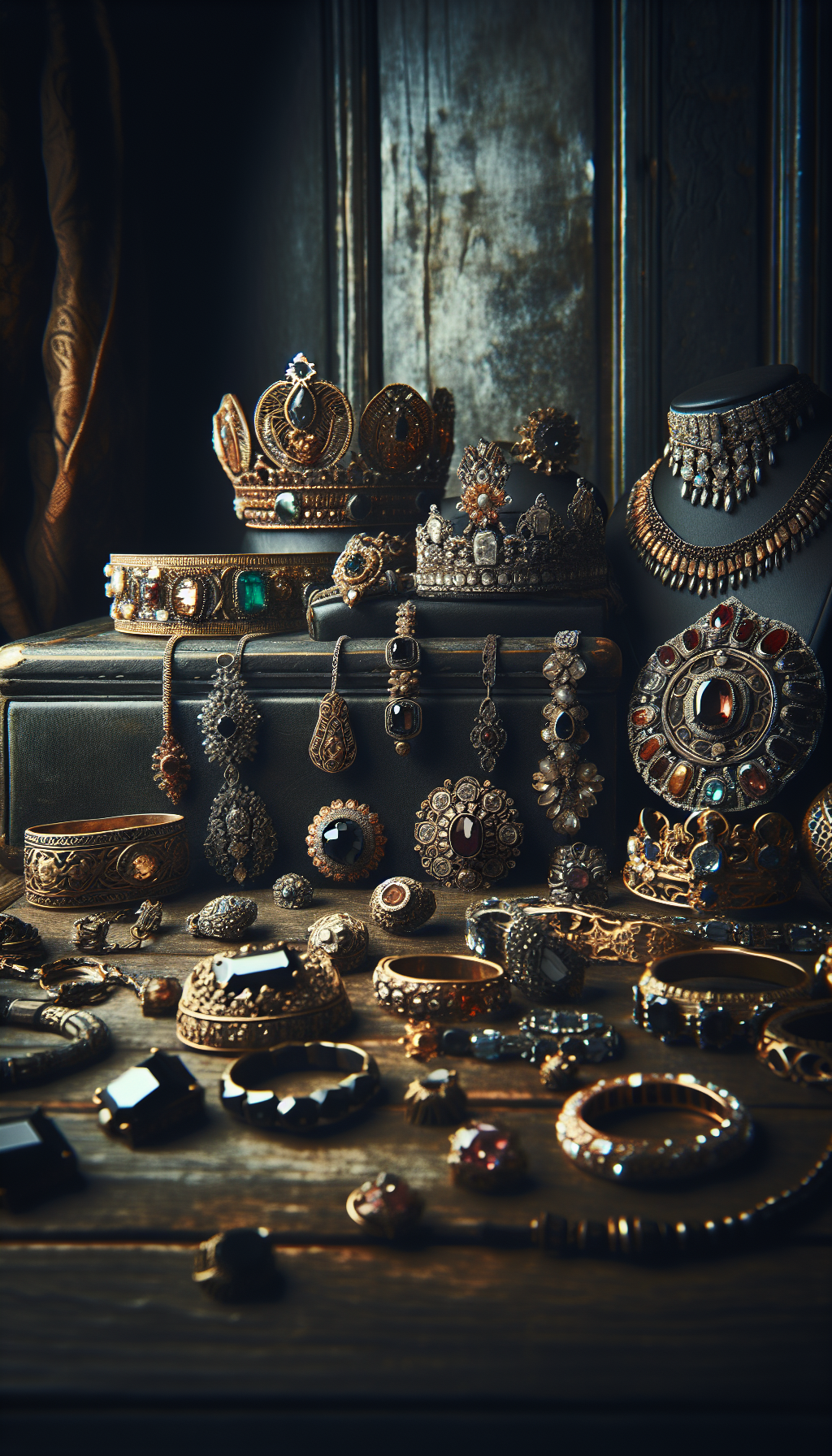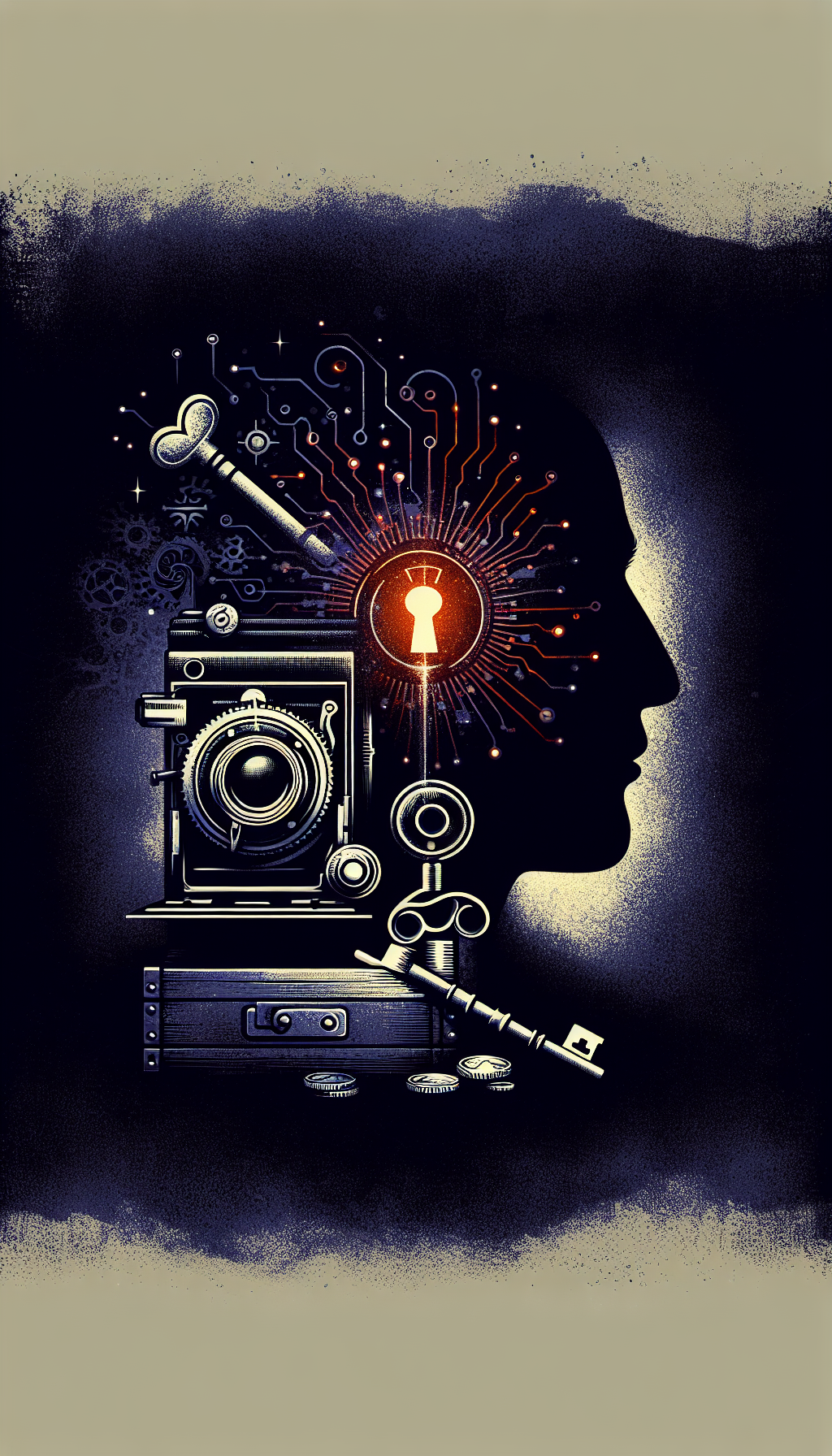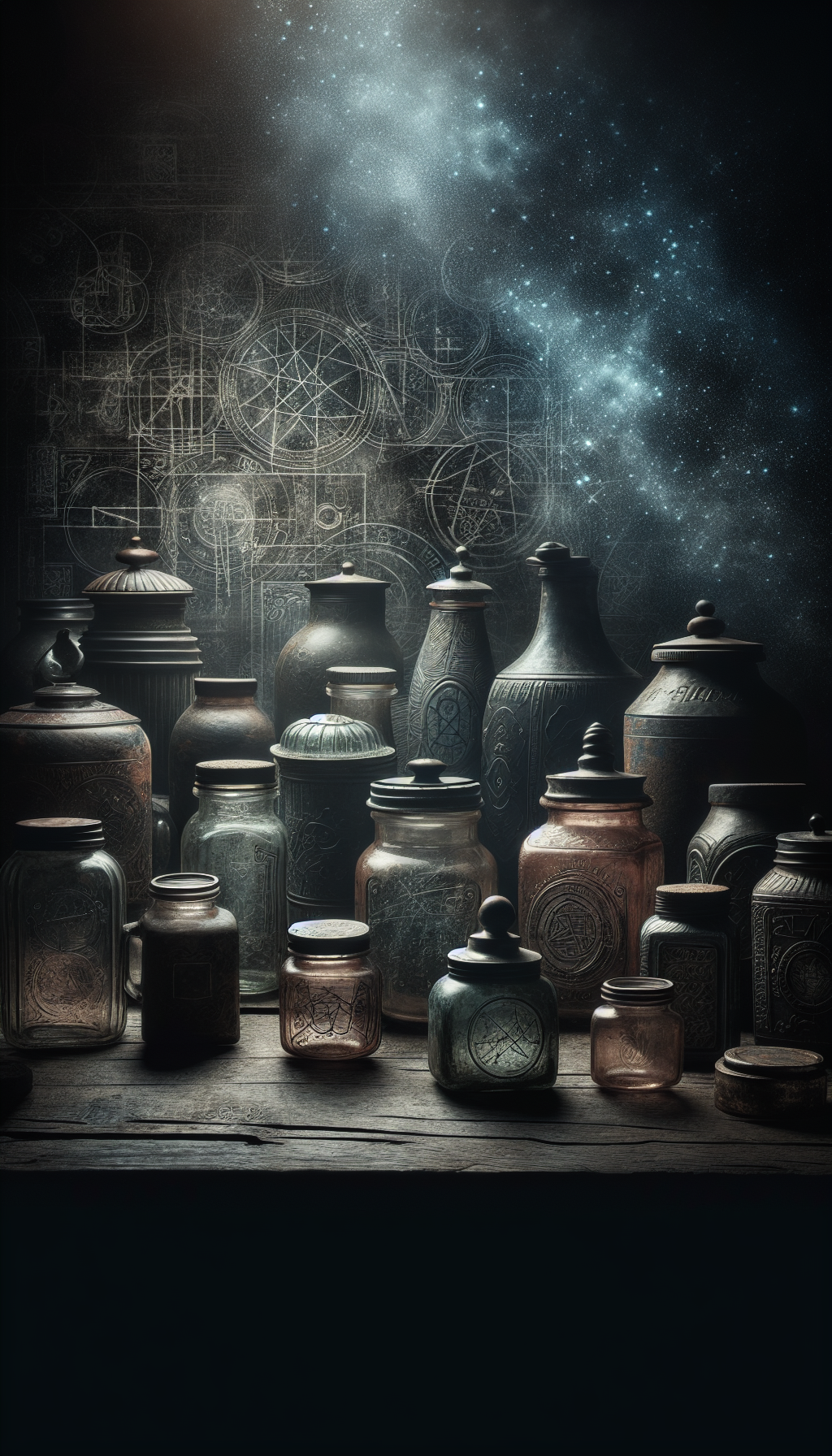Introduction to Antique Music Boxes
From elegant cylinder boxes of Swiss origin to massive disc-playing Regina music boxes, these treasured items vary significantly in design, mechanism, and ultimately, value. Whether you’re a seasoned collector looking to expand your knowledge or someone who recently inherited a family heirloom, understanding the factors that influence antique music box values can help you make informed decisions about your musical treasures.
In this comprehensive guide, we’ll explore the fascinating world of antique music boxes, including their historical development, key manufacturers, identification techniques, and most importantly, the various factors that determine their market value in today’s collecting landscape.
Antique Music Box Market Highlights
The History and Evolution of Music Boxes
Historical Development of Music Boxes
- 1770s
Early Beginnings
The first music boxes (originally called "carillons à musique") developed from musical snuff boxes in Switzerland. These early examples featured small cylinder mechanisms playing simple melodies. - 1800-1850
Golden Age Begins
Swiss and French manufacturers perfected cylinder music boxes with sophisticated movements, multiple tunes, and ornate cases. Key makers like Nicole Frères and Bremond emerged. - 1850-1880
Technical Innovations
New features were introduced: interchangeable cylinders, dampers, fuller sound with more notes, and intricate cases with inlaid woods and automata. - 1880s-1900
Disc Music Box Era
The introduction of metal disc music boxes by Symphonion, Regina, and Polyphon revolutionized the industry, making music boxes more affordable and offering greater musical variety. - 1900-1920
Decline Period
The rise of phonographs gradually reduced the popularity of music boxes. Production declined, though high-end manufacturers continued creating luxury pieces. - 1950s-Present
Revival & Collecting
Interest in antique music boxes resurged, with collectors, museums, and specialized dealers helping preserve these mechanical marvels. Modern makers like Reuge continue the tradition.
Types of Antique Music Boxes
Cylinder Music Boxes
Cylinder music boxes represent the earliest and often most valuable type. Their mechanism consists of a metal cylinder with carefully placed pins that pluck the teeth of a steel comb when rotated. The finest examples come from Swiss and French makers from the mid-19th century.
Key characteristics include:
- Metal cylinders (typically brass) with precisely placed pins
- Steel combs with varying numbers of teeth (determining musical range)
- Often housed in ornate wooden cases with inlaid designs
- Single cylinders or interchangeable cylinder systems (more valuable)
- Sometimes featuring additional elements like bells, drums, or automata
According to Vincent Freeman Antiques, the quality of restoration significantly impacts cylinder music box values, with expertly restored examples commanding premium prices.
Disc Music Boxes
Emerging in the 1880s, disc music boxes revolutionized the industry with their interchangeable discs that could play a much wider variety of music. Major manufacturers included Regina, Polyphon, and Symphonion.
Key characteristics include:
- Large metal discs with punched holes or tabs
- Easier to change music selections compared to cylinders
- Typically larger in size than cylinder boxes
- Various formats from tabletop models to floor-standing cabinets
- Discs available in different sizes (15.5", 18", 24", 27", etc.)
Collectors at M.S. Rau note that complete disc music boxes with their original discs in working condition are highly sought after, with value increasing based on the number of discs included.
Specialty and Novelty Music Boxes
Beyond standard formats, specialty music boxes often command higher prices due to their uniqueness and craftsmanship:
- Automata music boxes: featuring moving figures, scenes, or dancers
- Singing bird boxes: small boxes with mechanical birds that move and chirp
- Watch or clock music boxes: timepieces with integrated musical mechanisms
- Musical snuff boxes: early pocket-sized musical containers
- Musical chairs or furniture: with hidden music mechanisms
- Orchestral music boxes: with additional instruments like drums, castanets, or organ pipes
Antique Music Box Value Ranges
Current market values by type and condition
</tbody>
</table>
Key Manufacturers and Their Values
Prestigious Cylinder Music Box Makers
Nicole Frères (Swiss, 1815-1876)
- Considered among the finest cylinder box manufacturers
- Known for exceptional sound quality and technical precision
- Typically marked “Nicole Frères, Geneva” on the movement
- Value range: $2,500 - $10,000+ depending on size and features
B.A. Bremond (Swiss, 1830-1886)
- Famous for premium quality and musical arrangements
- Often found in elaborate cases with inlay work
- Value range: $2,000 - $8,000+
Mermod Frères (Swiss, 1816-1903)
- Known for sublime musical arrangements and quality
- Often marked with their distinctive “MF” logo
- Value range: $1,800 - $7,000+
Charles Paillard (Swiss, 1840-1899)
- Respected for excellent sound and craftsmanship
- Value range: $1,500 - $6,000+
Notable Disc Music Box Manufacturers
Regina Music Box Company (American, 1892-1922)
- Most successful American music box manufacturer
- Models range from small tabletop to large floor-standing cabinets
- Particularly valuable: Corona, Sublima, and Orchestral models
- Value range: $800 - $15,000+ for rare orchestral models
Polyphon (German, 1880s-1920s)
- Known for rich, full sound and quality construction
- Produced various sizes from tabletop to coin-operated models
- Value range: $1,000 - $8,000+
Symphonion (German, 1885-1915)
- Early innovator in disc music boxes
- Value range: $900 - $6,000+
Modern Collectible Manufacturers
Reuge (Swiss, 1865-present)
- Still produces high-quality music boxes today
- Vintage Reuge pieces from mid-20th century: $500 - $2,800
- Contemporary limited editions can also be valuable collectibles
As one collector on Reddit noted, identifying the manufacturer through markings, serial numbers, or movement characteristics is essential for proper valuation.
Factors Affecting Antique Music Box Values
Condition and Functionality
Condition is perhaps the single most important factor affecting value. According to experts from Music Box Attic, a music box in poor condition or non-working order may lose 50-70% of its potential value.
Music Box Condition Assessment
Check applicable items to help determine condition rating
- Mechanism plays smoothly without skipping or jarring
- All notes sound clear and properly tuned
- Original comb teeth intact without breaks or damage
- Case in excellent condition without major damage
- Original finish present and in good condition
- All decorative elements intact (inlay, veneer, etc.)
- Cylinder or discs in good condition without damage
- Original hardware (hinges, locks, key) present
- Movement has not been improperly repaired
- For disc boxes: original discs included and playable
Rarity and Scarcity
Rare music boxes command significantly higher prices. Factors affecting rarity include:
- Limited production numbers
- Unusual features or mechanisms
- Boxes from less common manufacturers
- Early examples that rarely survived
- Specialty boxes with unique complications (automata, multiple cylinders, etc.)
Provenance and History
A documented history or notable previous ownership can substantially increase value:
- Royal or aristocratic ownership
- Famous previous owners
- Well-documented history
- Original sales receipts or documentation
- Exhibition history
Size and Complexity
Generally, larger and more complex music boxes are more valuable:
- Number of tunes (more tunes = higher value)
- Number of notes (larger comb with more notes = higher value)
- Additional features like bells, drums, or automata
- Interchangeable cylinders or large disc collections
Originality vs. Restoration
While professional restoration can enhance value, collectors generally prefer original, unaltered pieces:
- Original finishes are typically preferred over refinished cases
- Period-appropriate repairs using matching materials
- Extensively modified or poorly restored boxes lose significant value
- Original components (cylinders, combs, discs) are crucial
According to a JustAnswer antiques expert, a professionally restored Reuge cylinder music box in burled walnut can retail for $2,200-$2,800 in today’s market.
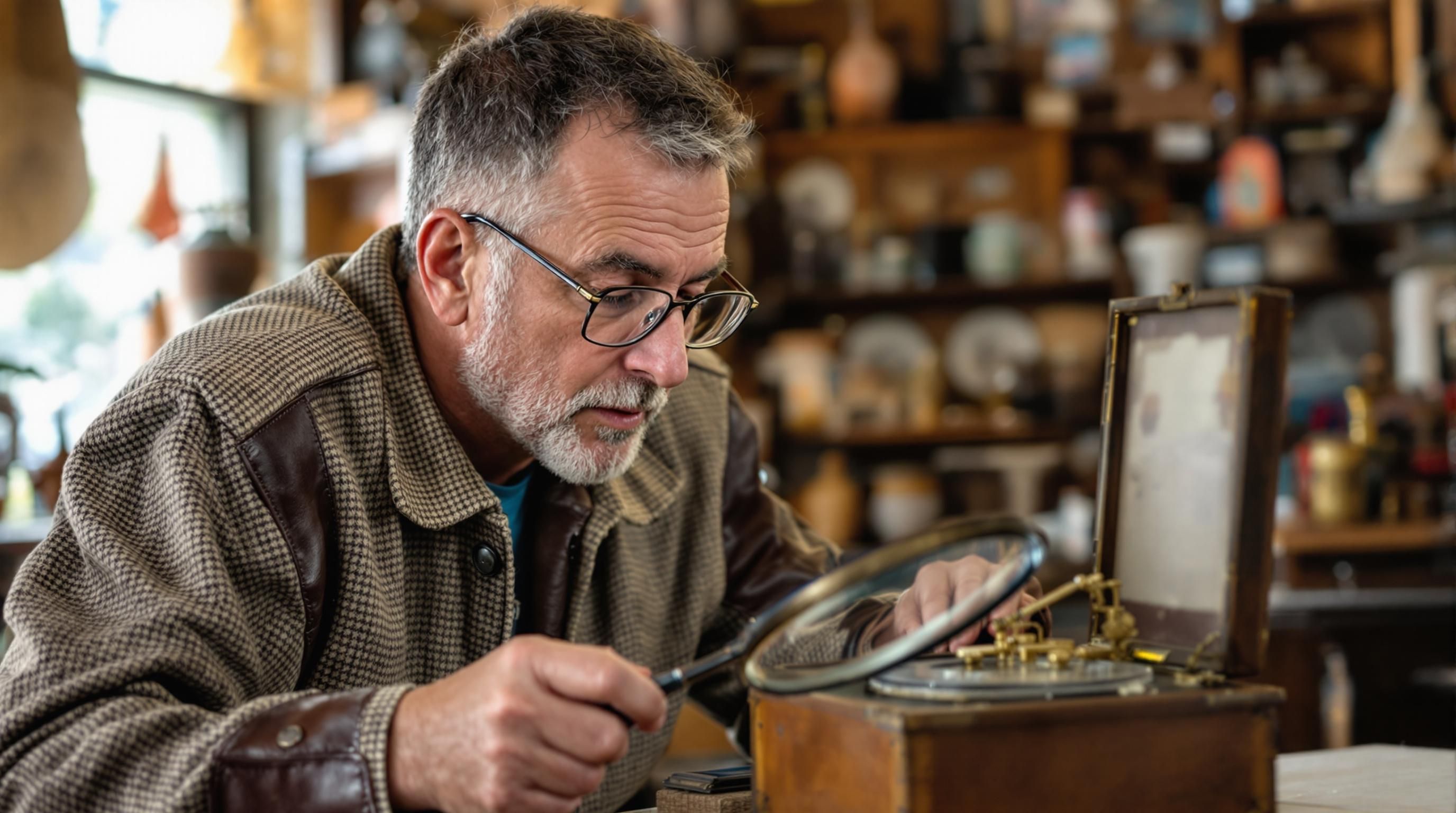
How to Identify and Date Your Antique Music Box
Examining Maker’s Marks and Serial Numbers
Most quality music boxes will have some form of maker’s mark:
- Look on the movement itself (not just the case)
- Check the underside of the mechanism
- Look for engraved plates or stamps
- Serial numbers can help establish manufacturing date
According to Solvang Antiques, many music box makers stamped their name and sometimes the date of manufacture on their products.
Analyzing the Mechanism
The mechanism provides crucial clues about age and origin:
- Comb analysis: Early combs (pre-1820) were often made with individual teeth screwed to a backplate. Later combs were cut from a single piece of steel.
- Cylinder examination: Hollow or waxless cylinders likely predate 1820.
- Dampening systems: The presence and type of dampers can indicate age.
- Tuning pins: The style and arrangement of tuning pins vary by maker and period.
Case Construction and Materials
The case provides additional clues:
- Wood types: Rosewood, walnut, and burled woods were common
- Inlay styles: Different periods featured distinctive marquetry patterns
- Construction techniques: Dovetail joints, nails, or screws can indicate age
- Finish: Original shellac or varnish vs. modern polyurethane
Sound Quality and Musical Arrangements
The music itself can offer identification clues:
- Popular tunes of specific eras
- Arrangement style characteristic of certain makers
- Number of notes (ranging from 18 to 144+ in premium boxes)
- Sound quality (Swiss makers were known for exceptional clarity)
Dating Tips for Common Types
Cylinder Music Boxes:
- Pre-1850: Simpler mechanisms, often visible screws holding teeth
- 1850-1875: Peak quality, often with dampers and refined cases
- 1875-1900: Often with simpler cases as market competition increased
Disc Music Boxes:
- 1885-1895: Early production, often with simpler features
- 1895-1905: Peak production years with greatest variety
- 1905-1920: Declining production as phonographs gained popularity
For more detailed guidance on dating music boxes, Music Box Attic offers an extensive collector’s guide.
Where to Sell Antique Music Boxes
Specialized Dealers and Auctions
For rare or high-value music boxes, specialized dealers and auction houses often provide the best returns:
- Specialized music box dealers: These experts understand true value and have clientele willing to pay premium prices for quality pieces.
- Auction houses: Major auction houses like Christie’s and Sotheby’s handle exceptional examples, while smaller regional auction houses may be appropriate for mid-range pieces.
- Music box collector associations: Organizations like the Musical Box Society International connect sellers with serious collectors.
Online Marketplaces
Online platforms offer wide reach but varying levels of expertise:
- 1stDibs: A marketplace for high-end antiques with 170+ antique music boxes ranging from $100 to several thousand dollars.
- eBay: The Antique Music Box category offers broad exposure but potentially lower prices than specialized venues.
- Etsy: Appeals to collectors seeking unique or restoration-ready pieces.
- Facebook Groups: Dedicated groups like buy/sell/trade antique music boxes connect sellers directly with collectors.
Local Options
Don’t overlook local opportunities:
- Antique shops may purchase outright or sell on consignment
- Estate sale companies can include music boxes in larger sales
- Local auctions may attract regional collectors
Valuation Before Selling
Before selling, consider getting a professional appraisal:
- Provides documentation of value for insurance or sale
- Helps establish reasonable asking price
- Identifies any rare or unusual features that may increase value
- Can uncover restoration needs that should be addressed before sale
According to collectors on Quora, most standard antique music boxes fall in the $100-$200 range, while exceptional examples can reach several thousand dollars, making proper valuation crucial before selling.
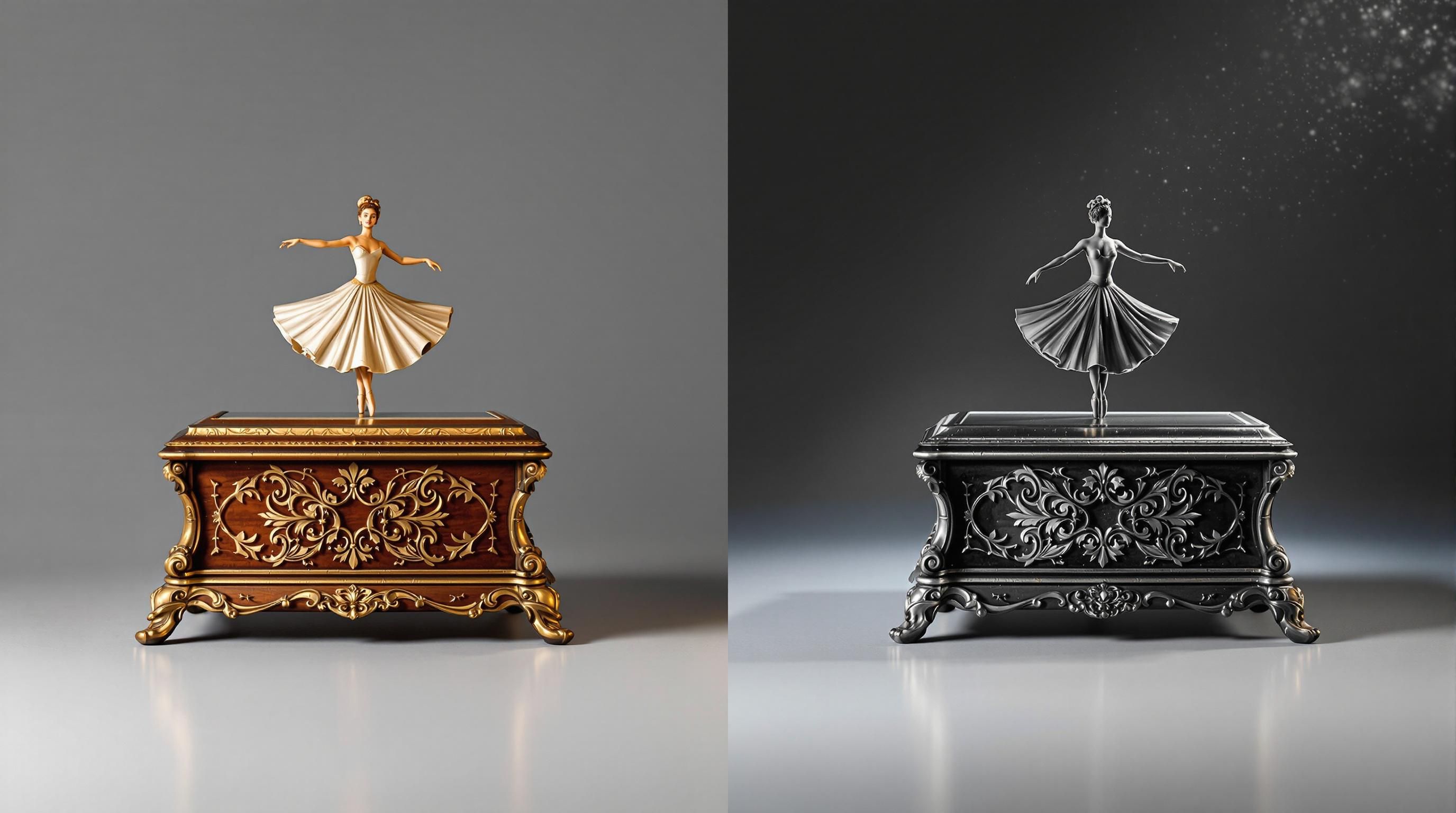
Collecting and Investing in Antique Music Boxes
Market Trends and Investment Potential
The antique music box market has shown fairly stable appreciation over time:
- Premium makers like Nicole Frères continue to appreciate steadily
- Rare and unusual examples have shown the strongest growth
- Complete sets with original cylinders or large disc collections retain value best
- Well-documented provenance adds significant premium
- Market follows broader antique trends but with specialized collector base
According to price guides from Carters Antiques, music box values have ranged from modest ($18) for simple examples to substantial ($17,360) for rare and exceptional pieces.
Building a Focused Collection
Successful collectors often develop a specific focus:
- Collecting by manufacturer (all Nicole Frères or Regina examples)
- Focusing on a specific period (Golden Age cylinder boxes)
- Specializing in a particular type (singing bird boxes or automata)
- Collecting by musical theme or repertoire
- Focusing on technical innovations or mechanisms
Preservation and Care
Proper care is essential for maintaining value:
- Store at moderate temperature and humidity (40-50% humidity ideal)
- Keep away from direct sunlight to prevent fading
- Wind regularly but gently to maintain mechanism
- Have professional servicing every 3-5 years for active players
- Use appropriate materials for cleaning (avoid harsh chemicals)
- Handle discs by edges only; store vertically in acid-free sleeves
Insurance and Documentation
Protect your investment with proper documentation:
- Professional appraisals for insurance purposes
- Detailed photographs of the mechanism and case
- Documentation of provenance and history
- Records of any restoration work
- Receipts and certificates of authenticity
External Resources for Music Box Collectors
Music Box Attic: Rare Music Boxes
Extensive collection of rare and one-of-a-kind music boxes, with detailed information on what makes certain examples particularly valuable.
Vincent Freeman Antiques: Music Box Collection
Specialized dealer offering antique music boxes restored to exceptionally high standards, with detailed descriptions of mechanisms and history.
Carters Price Guide: Music Boxes
Comprehensive price guide with auction results for antique musical boxes and cabinets, showing values from $18 to $17,360.
M.S. Rau: Antique Music Boxes
Premier antique gallery featuring collectible music boxes ranging from Regina disk players to cylinder and orchestrion musical instruments.
1stDibs: Antique Music Boxes Marketplace
Curated marketplace featuring 170+ antique music boxes from dealers worldwide, with detailed descriptions and pricing information.
eBay: Antique Music Box Category
Active marketplace for buying and selling antique music boxes, with examples across various price points and conditions.
Reddit: Antique Music Box Community
Online community where collectors discuss music box identification, valuation, and restoration questions.
Facebook: Buy/Sell/Trade Antique Music Boxes
Active group for people buying, selling, and trading antique music boxes, with knowledgeable collectors providing information.
Most Valuable Antique Music Boxes
Record-Setting Examples
The most valuable music boxes typically combine multiple desirable factors:
Exceptional Automata Pieces: Complex automata music boxes with multiple animated figures and scenes from premier makers have sold for $50,000-$100,000+ at major auction houses.
Royal Provenance: Music boxes with documented royal ownership history, particularly from European royal families, can command six-figure prices.
Extraordinary Singing Bird Boxes: Exceptionally rare singing bird boxes by Frères Rochat or Bruguier have achieved prices exceeding $300,000 at specialized auctions.
Early Examples: Very early, historically significant music boxes from the late 18th or early 19th century in original condition can be valued at $30,000-$75,000.
Master Craftsman Pieces: One-of-a-kind pieces by recognized master craftsmen with extraordinary complication can exceed typical price ranges by multiples.
What Makes These Examples So Valuable?
The most valuable music boxes typically share these characteristics:
- Extreme Rarity: Often fewer than a handful of similar examples exist
- Historical Significance: Representing important technical innovations
- Exceptional Artistry: Combining mechanical ingenuity with artistic beauty
- Perfect Condition: Maintaining original finishes and components
- Impeccable Provenance: Documented history of ownership
- Complete Originality: Unaltered from original production
Common Questions About Antique Music Box Values
What makes a music box valuable?
Several factors determine a music box's value:
- Maker/Brand: Premium manufacturers like Nicole Frères, Regina, or Reuge command higher prices
- Condition: Working mechanisms and original cases in excellent condition
- Rarity: Unusual features, limited production runs, or unique designs
- Complexity: Number of notes, tunes, and additional features (automata, bells, etc.)
- Age: Generally, older examples from the 19th century are more valuable
- Materials: High-quality woods, inlays, and premium finishes
- Provenance: Documented history or notable previous ownership
As noted by Music Box Attic, boxes using precious materials with high note movements that take longer to craft typically command premium prices.
How do I tell how old a music box is?
Dating a music box involves examining several elements:
- Maker’s Marks: Look for manufacturer stamps, which often include dates
- Combs: Early combs (pre-1820) often had individual teeth screwed to a backplate
- Cylinders: Hollow or waxless cylinders likely predate 1820
- Case Construction: Joinery methods, wood types, and finishing techniques
- Musical Selections: Popular tunes of specific eras
- Serial Numbers: Can be cross-referenced with manufacturer records
Many antique music box makers stamped their name and sometimes the date of manufacture on their products, typically on the movement rather than the case.
How do I date a music box?
To determine when your music box was made:
- Examine the Combs: The structure of the comb (the part that plucks notes) changed over time
- Check the Cylinder: Hollow or waxless cylinders typically predate 1820
- Look for Maker’s Marks: Often include manufacturing dates
- Analyze the Mechanism: Dampening systems, governor designs, and other features evolved over time
- Research the Tunes: The musical selections can help date the period
- Examine Materials and Construction: Case materials and construction techniques changed over decades
For disc music boxes, the manufacturer and disc size/style can help establish manufacturing dates, with most disc boxes produced between 1885-1920.
What is the old music box called?
The original term for music boxes was "carillons à musique" (French for "chimes of music"). They developed from musical snuff boxes in the 18th century.Different types have specific names:
- Cylinder music boxes: The traditional type with pins on a rotating cylinder
- Disc music boxes: Later innovations using metal discs (like Regina or Polyphon)
- Organettes: Small hand-cranked reed organs
- Musical watches/snuff boxes: Early pocket-sized musical items
- Singing bird boxes: Specialized boxes featuring mechanical birds
The term "music box" became standardized in English in the 19th century as these items grew in popularity.
How much is an antique German music box worth?
German antique music boxes vary significantly in value:
- Standard disc music boxes (Polyphon, Symphonion): $200-$1,500 depending on size and condition
- Large floor model disc players: $1,500-$8,000+
- Rare or elaborate German boxes with automata: $5,000-$15,000+
- Small tabletop models in fair condition: $100-$300
As noted on Quora, most standard German music boxes fall in the $100-$200 range, with more elaborate and rare examples commanding higher prices. The condition of the mechanism, case, and the presence of original discs significantly impact value.
Where can I sell my antique music box?
Several options exist for selling antique music boxes:
- Specialized dealers: Offer expertise and targeted customer base
- Auction houses: Major houses for valuable pieces, regional for standard examples
- Online marketplaces: eBay, 1stDibs, Etsy, Ruby Lane
- Collector groups: Facebook groups, collector forums, musical box societies
- Antique shops: May purchase or sell on consignment
- Collector shows: Events specializing in mechanical music
For valuable pieces, getting an appraisal before selling is highly recommended to ensure you receive a fair price.
What are the most valuable antique music boxes?
The most valuable antique music boxes include:
- Exceptional singing bird boxes by Frères Rochat or Bruguier: $100,000-$300,000+
- Complex automata music boxes with multiple figures: $50,000-$150,000+
- Royal provenance pieces with documented ownership: $30,000-$100,000+
- Early Nicole Frères interchangeable cylinder boxes: $15,000-$50,000
- Rare orchestral Regina or Symphonion models: $10,000-$25,000+
The highest values are achieved by pieces that combine exceptional craftsmanship, perfect condition, historical significance, and complete originality with proper documentation.
How do I know if my music box is valuable?
To assess if your music box might be valuable:
- Identify the maker: Look for maker’s marks on the movement (not just the case)
- Assess condition: Working mechanism, original case, no major damage
- Count the notes/teeth: More notes generally means higher value
- Check for special features: Interchangeable cylinders, automata, bells
- Examine materials and craftsmanship: Quality of wood, inlays, and finishing
- Research comparable sales: Look for similar examples that have sold recently
- Consult an expert: For potentially valuable pieces, get a professional appraisal
A Reuge inlaid burled walnut cylinder music box from the late 1800s can retail for $2,200-$2,800 in today’s market, according to antique experts on JustAnswer.
Conclusion: The Enduring Allure of Antique Music Boxes
From modest examples worth a few hundred dollars to extraordinary museum-quality pieces valued at tens of thousands, the market for antique music boxes remains active and passionate. These mechanical wonders serve as both decorative arts and technological artifacts, preserving musical traditions and craftsmanship from an era before digital sound.
For collectors, the hunt for these musical treasures continues to provide both aesthetic pleasure and potential investment returns. With proper care and appreciation, these remarkable instruments can continue to delight generations with their enchanting melodies and mechanical magic.
Whether you’re drawn to the intricate complexity of a Swiss cylinder box, the accessible charm of a disc-playing Regina, or the magical animation of an automaton piece, the world of antique music boxes offers endless fascination for collectors at every level.
Get a Professional Appraisal
Unsure about your item’s value? Our certified experts provide fast, written appraisals you can trust.
- Expert report with photos and comps
- Fast turnaround
- Fixed, upfront pricing
No obligation. Secure upload.
| Category | Price | Notes |
|---|---|---|
| Cylinder Music Box (Swiss/French) | $1,200 - $5,000+ | Varies by maker, size, condition, and number of tunes |
| Interchangeable Cylinder Box | $3,000 - $15,000+ | Higher with multiple original cylinders |
| Disc Music Box (Regina, Polyphon) | $800 - $4,000+ | Value increases with size and number of discs |
| Automata Music Box | $2,500 - $25,000+ | Exceptional examples can exceed $50,000 |
| Singing Bird Box | $5,000 - $30,000+ | Rare examples by Rochat or Bruguier much higher |
| Modern Reuge Luxury Box | $700 - $2,800 | For premium modern examples in perfect condition |
